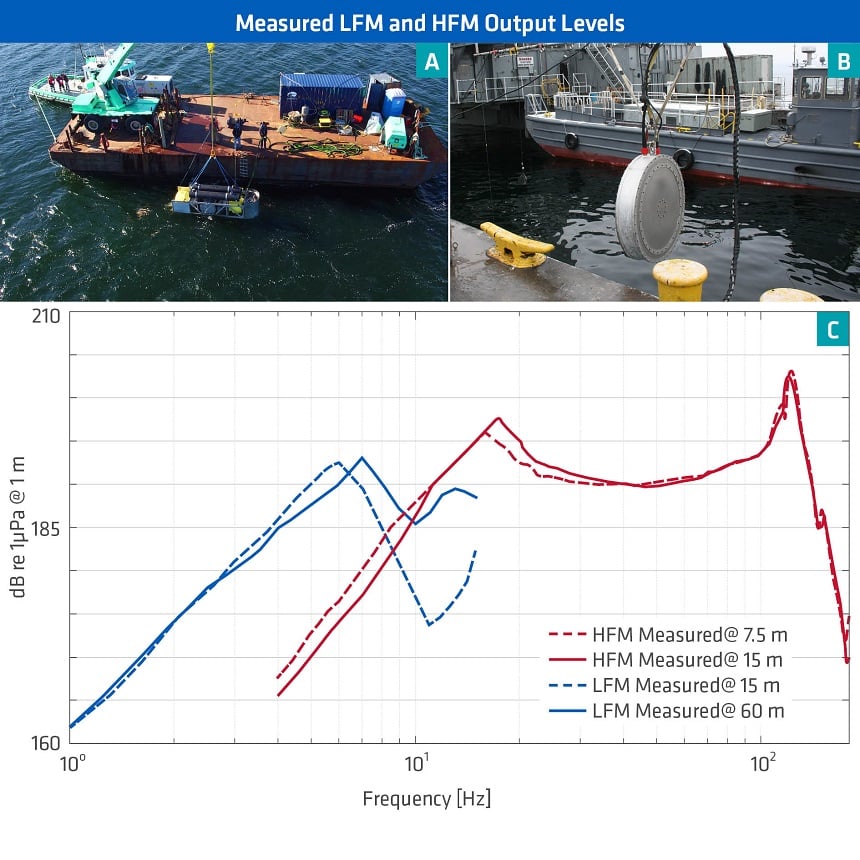The Demand for Alternative Marine Seismic Sources
Requirements for an efficient and reliable environmentally friendly alternative to conventional air gun sources is driving the industry to develop concepts capable of sufficient low-frequency output as well as high output fidelity.
Advantages of marine vibrator sources include:
- Efficiency. Marine vibrator sources are all-electric; electrical conversion to acoustic energy is much more efficient requiring compressed air, which leads to a great deal of energy loss through heat dissipation.
- More environmentally friendly than air gun-based sources. Marine vibrator sources offer better control of the amplitude and bandwidth of the emitted acoustic energy so audio signals can be limited to only the frequency range necessary for seismic.
- Controlled signal output, which offers opportunities for new and flexible source geometries.
- The potential for ultra-low-frequency 1–6 Hz output for full-waveform inversion.
- Tailor-made signatures. Marine vibrators use whatever frequency content, phase characteristics, and output level desired, whereas much of the acoustic energy generated by air guns contributes energy at frequencies much higher than 250 Hz, which are not typically used for imaging the subsurface.
Sea Trial of Prototype Modules
PGS has developed two marine vibrator systems that operate at the low- (covering 1–10 Hz) and high-frequency (covering 10–125 Hz) ends of the seismic frequency bands. The marine vibrator design has sufficient size and capacity to produce enough sound pressure without shaking itself apart, and by exploiting resonance tuning, is reliable at low frequencies where efficient challenges are greatest for all marine seismic sources.
Prototype modules have undergone multiple sea trials at different operating depths and locations and at various power levels (see the image below). The low-frequency module unit was tested at 15 and 60 m depth, while the high-frequency module unit was tested at 7.5 and 15 m depth.
With the aid of synthetic data examples, as described in our article, The music of marine seismic: A marine vibrator system based on folded surfaces, we demonstrate that seismic data acquired using marine vibrators in either intermittent or continuous mode can be processed.
Read the full article in our Technical Library, here.
